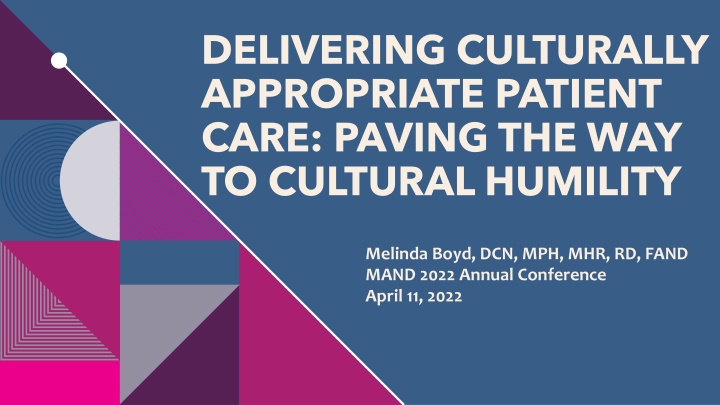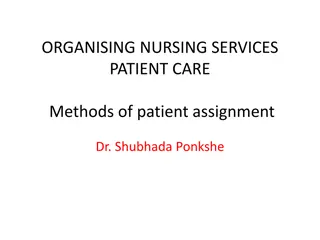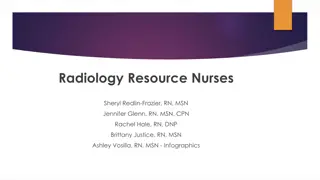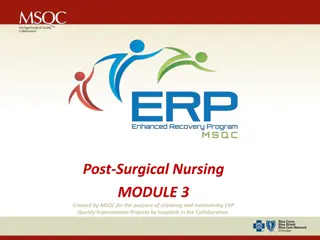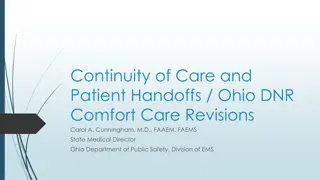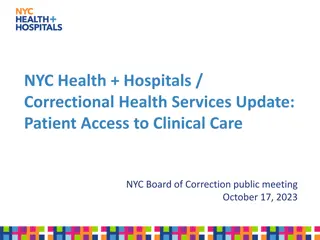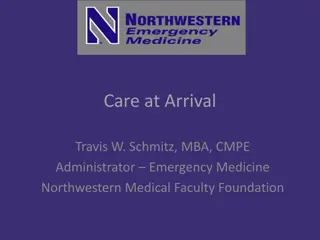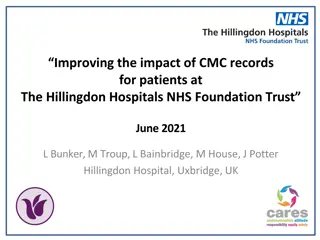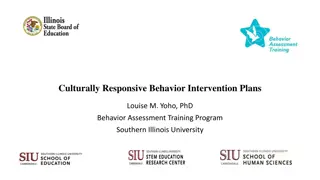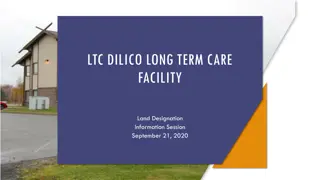Delivering Culturally Appropriate Patient Care: Paving the Way to Cultural Humility
In this presentation by Melinda Boyd, DCN, MPH, MHR, RD, FAND, learn about developing cultural humility, incorporating cultural beliefs into practice, and implementing culturally appropriate care. Explore key terms, definitions, disparities, and the importance of cultural competence. Understand health disparities and why they exist.
Download Presentation

Please find below an Image/Link to download the presentation.
The content on the website is provided AS IS for your information and personal use only. It may not be sold, licensed, or shared on other websites without obtaining consent from the author.If you encounter any issues during the download, it is possible that the publisher has removed the file from their server.
You are allowed to download the files provided on this website for personal or commercial use, subject to the condition that they are used lawfully. All files are the property of their respective owners.
The content on the website is provided AS IS for your information and personal use only. It may not be sold, licensed, or shared on other websites without obtaining consent from the author.
E N D
Presentation Transcript
DELIVERING CULTURALLY APPROPRIATE PATIENT CARE: PAVING THE WAY TO CULTURAL HUMILITY Melinda Boyd, DCN, MPH, MHR, RD, FAND MAND 2022 Annual Conference April 11, 2022
LEARNING OBJECTIVES At the end of this session, attendees will be able to 1. Identify ways to personally develop cultural humility 2. Understand how to incorporate a patient's cultural beliefs into evidence-based practice 3. Implement culturally appropriate care in their own practice 2
PERSONAL BACKGROUND & DISCLOSURES BACKGROUND Military spouse, living overseas for 9 years in 3 countries DISCLOSURES No COI to disclose Past International Affiliate leadership team member (2010-2021), CR Chair (2018-2021) Academy IDEA Committee Member (2020-2022) 3
INTRODUCTION Key Terms to Know 4
DEFINITIONS Culture Diversity Inclusion Equality Equity Microaggressions Implicit Bias Health Disparities** 5
CULTURAL Competence/Competency Awareness Humility ***Shift in preferred and acceptable terminology*** 6
CULTURALLY APPROPRIATE CARE Care that responds to the needs of diverse individuals, family and caregivers (Academy Definition List) Also called culturally relevant or culturally competent care 7
HEALTH DISPARITIES 8
HEALTH DISPARITIES Differences in health or health outcomes Incidence or prevalence greater or lesser than another group Can occur with disease risk, severity, and mortality May be due to race, ethnicity, gender, sexual orientation, geography, socioeconomic status, education level May also be due to structural or social inequalities 9
DISPARITIES EXISTWHY? oHealth care access issues oIncome/Education oGeography (built environment, road system) oLocal infrastructure (housing, stores/commerce, sanitation) oLack of culturally appropriate care 10
OTHER CONSIDERATIONS o Historical health outcomes research is predominately White and Male o Textbook focus on presentation of symptoms from typical patient o Providers may struggle to connect with patients who are different from their own background despite training in cultural competence 11
CULTURALLY APPROPRIATE CARE Paving the way to cultural humility
ROLE OF CULTURE Cultural [sic] influences more than merely what we eat; it affects how we eat, when we eat, where we eat, who we eat with, and (perhaps most importantly) why we eat. It also influences our beliefs and behaviors about obtaining food, food preparation, and physical activity. -Kumar (2020), Adolescent Nutrition textbook 13
WHAT THIS MEANS TO ME -Learning about the patient s why so you can properly motivate them -Respect -Recognizes the differences between you and the patient You don t have to agree with someone s cultural practice or belief, but you do need to respect it! -Two way learning process You learn from the patient while they are learning from you Ask questions, but be appropriate -Intervention honors the culture of the patient -Understand body image from their perspective 14
WHY SHOULD WE PROVIDE CULTURALLY APPROPRIATE CARE Forms a better relationship with the patient Helps develop mutual respect (not all about the provider and their world view) Allows you to be a better provider for that patient Has the power to improve health outcomes, meeting goals, and reduce health disparities 15
PUTTING IT INTO ACTION Skill Building 16
CULTURALLY APPROPRIATE CARE TOOL BOX Identify which cultures you are most likely to have as your patients Do you need a translator? Identify your own bias Journal/reflect after counseling a patient who is different from you Include relevant culture based questions on your pre-visit forms Learn a little about a lot of cultures Avoid stereotypes! 17
CULTURALLY APPROPRIATE CARE TOOL BOX Gain experience talking with people who are different from you build confidence Identify bias Visit local grocery stores that cater to different cultures Investigate products Check out labels Purchase to try at home Don t be afraid to ask questions Do they have pictures of the food they are cooking? It s ok to pause and research common foods they may be consuming 18
CULTURALLY APPROPRIATE CARE TOOL BOX Recognize harmful stereotypes of foods from different countries Foods consumed in ethnic restaurants likely aren t the traditional foods cooked at home Don t use negative terms to describe foods Learn a few basic words in the native languages you will encounter most often Politeness goes a long way! Adapt your materials to accommodate the patient s culture Help them identify where traditional foods fit on the American MyPlate model Use culturally relevant education tools 19
THINGS TO CONSIDER Inclusive language Person first Cultural gender roles/norms Local accessibility to traditional foods Body satisfaction and cultural views on body shape/size Your concern may not be shared by the patient Trust of providers Trust is earned, patient may be hesitant Historical trauma 20
COMBINING CULTURALLY APPROPRIATE CARE AND EVIDENCE BASED PRACTICE Patient care should always be individualized MNT based on current evidence o EAL, other guidelines o Consider the sample population from studies o Can that evidence be applied in your patient population? o Use professional judgement Adapt the evidence to fit your client s beliefs o Use their traditional foods when making meal suggestions Mediterranean diet example Approach guidelines in ways that make sense to the patient 21
YOU have the power to make a difference in the health outcomes of your patients it starts with delivering care that honors and respects the culture of your patient 23
I think we can all agree that we should do our best to educate ourselves on different cultures. However, just because someone identifies with a certain group, does not mean that they believe in or practice every aspect of that culture or religion. For example, we have a large Jewish population where I live and practice but not everyone who practices the religion keeps kosher. That is why it is so important to ask about special diets or practices. I personally have found by asking questions and being interested in the food practices of my clients they are more comfortable and MNT is therefore more successful. -Quote from a student, oncology RD 24
RESOURCES Advancing Health Equity, The University of Chicago https://www.solvingdisparities.org American Hospital Association, Becoming a Culturally Competent Health Care Organization https://www.aha.org/ahahret-guides/2013-06-18-becoming-culturally- competent-health-care-organization Culture and Health Literacy, CDC https://www.cdc.gov/healthliteracy/culture.html Harvard Implicit Bias Tests https://implicit.harvard.edu/implicit/takeatest.html Check out the MIGs for great resources on cultures https://www.eatrightpro.org/membership/academy-groups/member-interest- groups 25
RESOURCES Diversity and Inclusion Resource Hub https://www.eatrightpro.org/practice/practice-resources/diversity-and- inclusion Multicultural Counseling Techniques https://online.maryville.edu/blog/multicultural-counseling/ Racial and Ethnic Health Disparities and Chronic Disease Issue Brief https://www.eatrightpro.org/-/media/eatrightpro- files/advocacy/legislation/racial-and-ethnic-health-disparities-and-chronic- disease_january2021.pdf?la=en&hash=B06FD71CC82FA1E6611F2994BE3D7350 1DDACDB0 Diversify Dietetics https://www.diversifydietetics.org Association of American Medical Colleges https://www.aamc.org/professional-development/affinity- groups/cfas/diversity-inclusion-toolkit/resources 26
REFERENCES Academy of Nutrition and Dietetics. Definition of Terms. Accessed from https://www.eatrightpro.org/practice/quality- management/definition-of-terms Green-Morton E, Minkler M. Cultural competence or cultural humility: Moving beyond the debate. Health Promotion Practice. 2020;21(1):142-145. DOI: 10.1177/1524839919884912 Kumar M.M. (2020) Culturally Appropriate Care. In: Evans Y.N., Dixon Docter A. (eds) Adolescent Nutrition. Springer, Cham. https://doi.org/10.1007/978-3-030-45103-5_10 National Institutes of Health. Cultural respect. Accessed from https://www.nih.gov/institutes-nih/nih-office-director/office- communications-public-liaison/clear-communication/cultural-respect Stewart, A. (2019). Cultural humility is critical to health equity. Accessed from https://www.aafp.org/news/blogs/leadervoices/entry/20190418lv- humility.html 27
QUESTIONS? THANK YOU FOR YOUR TIME Melinda Boyd, DCN, MPH, MHR, RD, FAND melinda.jill.boyd@gmail.com
